Right ascension 05 38 38 Apparent dimensions (V) 40′ × 25′ Notable features In LMC Magnitude 8 | Declination −69° 05.7′ Radius 300 ly Distance to Earth 159,800 light years Absolute magnitude -11.7 Apparent magnitude (V) 8 | |
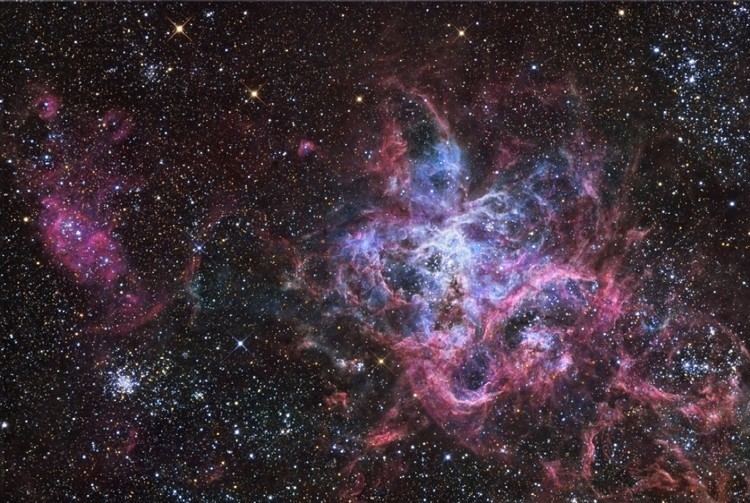 | ||
Designations NGC 2070, Doradus Nebula, Dor Nebula, 30 Doradus Coordinates RA 5h 38m 38s | Dec -69° 5′ 42″ Similar Large Magellanic Cloud, R136, S Doradus, Carina Nebula, Cat's Eye Nebula | ||
Hubblecast 44 hubble spies on the tarantula nebula
The Tarantula Nebula (also known as 30 Doradus) is an H II region in the Large Magellanic Cloud (LMC).
Contents
- Hubblecast 44 hubble spies on the tarantula nebula
- Discovery
- Properties
- NGC 2070
- Supernova 1987A
- References
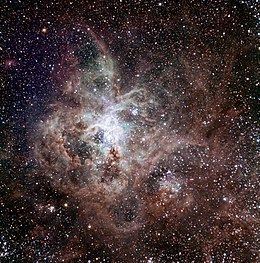
Discovery
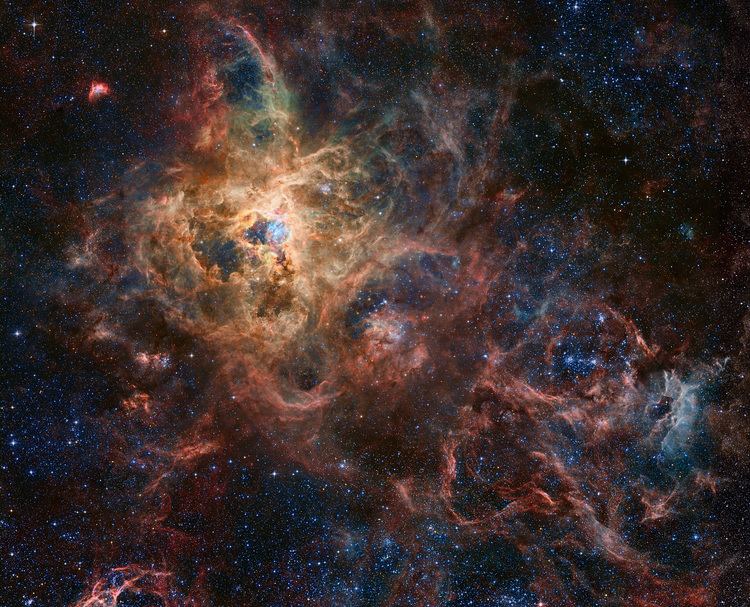
The Tarantula Nebula was observed by Nicolas Louis de Lacaille during an expedition to the Cape of Good Hope between 1751 and 1753. He catalogued it as the second of the "Nebulae of the First Class", "Nebulosities not accompanied by any star visible in the telescope of two feet". It was described as a diffuse nebula 20' across.
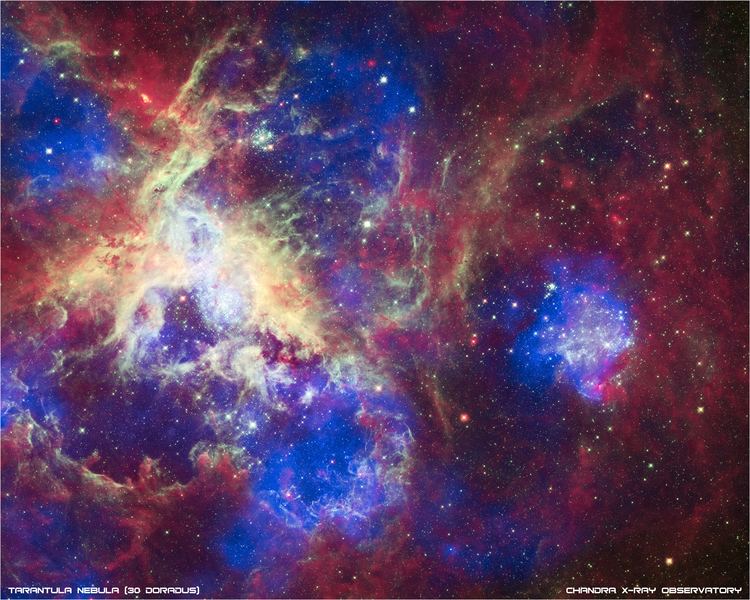
Johann Bode included the Tarantula in his 1801 Uranographia star atlas and listed it in the accompanying Allgemeine Beschreibung und Nachweisung der Gestirne catalogue as number 30 in the constellation "Xiphias or Dorado". Instead of being given a stellar magnitude, it was noted to be nebulous.
The name Tarantula Nebula arose the mid 20th century from the appearance in deep photographic exposures.
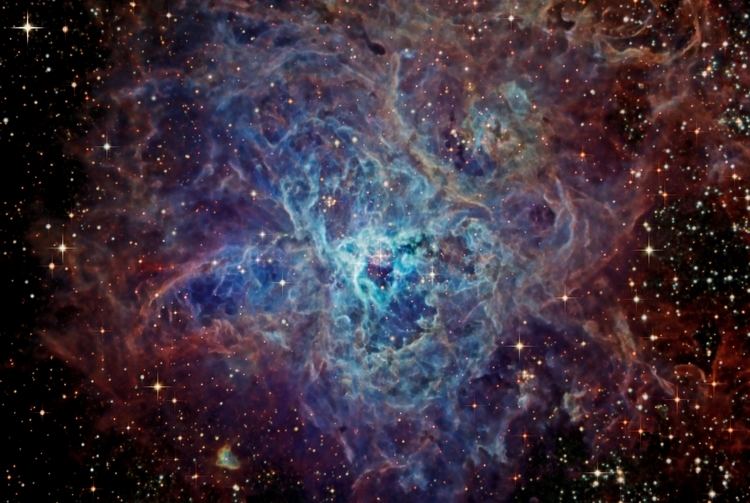
30 Doradus has often been treated as the designation of a star, or of the central star cluster NGC 2070, but is now generally treated as referring to the whole nebula area of the Tarantula Nebula.
Properties
The Tarantula Nebula has an apparent magnitude of 8. Considering its distance of about 49 kpc (160,000 light-years), this is an extremely luminous non-stellar object. Its luminosity is so great that if it were as close to Earth as the Orion Nebula, the Tarantula Nebula would cast visible shadows. In fact it is the most active starburst region known in the Local Group of galaxies. It is also one of the largest such regions in the Local Group with an estimated diameter of 200 pc. The nebula resides on the leading edge of the LMC where ram pressure stripping, and the compression of the interstellar medium likely resulting from this, is at a maximum.
NGC 2070
30 Doradus has at its centre the star cluster NGC 2070 which includes the compact concentration of stars known as R136 that produces most of the energy that makes the nebula visible. The estimated mass of the cluster is 450,000 solar masses, suggesting it will likely become a globular cluster in the future. In addition to NGC 2070, the Tarantula Nebula contains a number of other star clusters including the much older Hodge 301. The most massive stars of Hodge 301 have already exploded in supernovae.
Supernova 1987A
The closest supernova observed since the invention of the telescope, Supernova 1987A, occurred in the outskirts of the Tarantula Nebula. There is a prominent supernova remnant enclosing the open cluster NGC 2060, but the remnants of many other supernovae are difficult to detect in the complex nebulosity.
